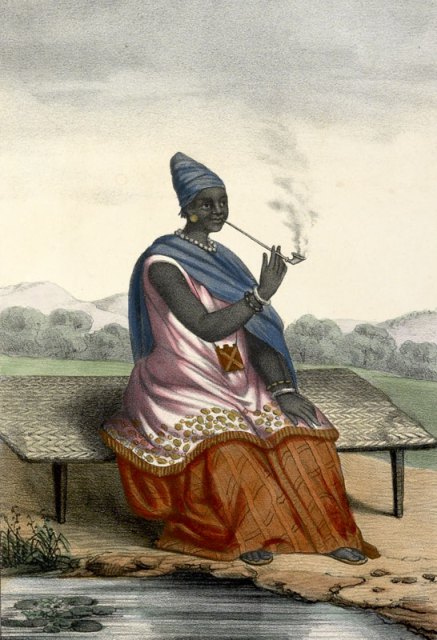I step out the airport taxi on to a sandy street. Sand! I know I grin, I’ve never lived anywhere where the city streets are sandy, and the exoticism thrills me.
It’s now 3am, but the city doesn’t sleep. The roads are populated with street sellers, garnering attention for their wares; small carts of fruit pilled with oranges and bananas, and petit tin nescafe stands with hand painted logos.
Arriving at Hotel Via-Via my only desire is to sleep, but the Senegalese night has other ideas. It’s pressing a dank oppressive heat, and a cold shower offers only temporary appeasement. Restless in the dark I grapple with the button on the standing fan, and it offers just enough relief for me to drop off for a couple of hours.
I’m starting to rethinking my commitment to the idea of incorporating a sweat lodge scenario into my work. But that idea belongs to another place, I’m here in pursuit of the old West African magic that survived and evolved through the French colonisation. I’m on a quest for the icons, amulets and rituals that have woven their way into daily life of todays Senegalese, distorting the orthodox Islamic religion that now dominates much of West Africa.
My inquiry begins in the next morning with a lengthy taxi ride from Dakar to Saint Louis. Five hours north of the capital, close to the border of Mauritania, Saint Louis was the first French settlement in Africa, once a trading port for ambergris, hides, and slaves, and now the seat of my investigation.
We are barely 2 mins from the hotel coming upon a roundabout when a short wide man roosting on its perimeter jerks up and signals us to pull over. It’s clear from the smart dark uniform stretched over his chest that he is an Official in some capacity, and immediately requests to check the luggage. The driver steps out as official struts around the car, words are exchanges quickly in Wolof, then a hand full of notes are pulled from the glove compartment. Our bags are not checked.
‘El Hadji,’ I murmered softly..
‘Yes?’
‘Corruption is a big problem in Africa, isn’t it?’
‘Oh no’ he said loudly, sucking on his pipe. ‘It’s no problem at all. If you want to bribe someone just go ahead and do it’.
The fatigue of my journey soon hits me, but sadly I’ve no head rest to lie on. Only the driver has this luxury, and his has a small fire extinguisher taped to the back, maybe if I had more energy this would concern me. My head flops against the side door window and I witness a flickering stream of African images:
Women swathed in bold patterns carrying great bowls of goods balanced their heads, their swaddled infants strapped to their backs. A young man coercing a horse and cart backwards down the road, the geldings feet forced into a slow reluctant moonwalk. The thick trunked baobab trees, each branch blooming into a storks nest. Goats, sheep and a mud bathed pig grazing lazily between stalls erected from sticks, selling fruits, meat, and as we travel further north, baskets, clay pots and nuts.
We past mile of men working in a trench parallel to the road, wielding pick axes with such strength as mirages flicker and undulate on the road in the mid day heat.
I spot one man working in a woollen bobble hat, a trickle of sweat runs down my back.
The traffic swells as we near the city of Saint Louis, the waters of the Senegal river lapp along the road edge, a bridge, another, a right turn at the women selling clementines on the corner, and we arrive at WAAW Centre for Art.




